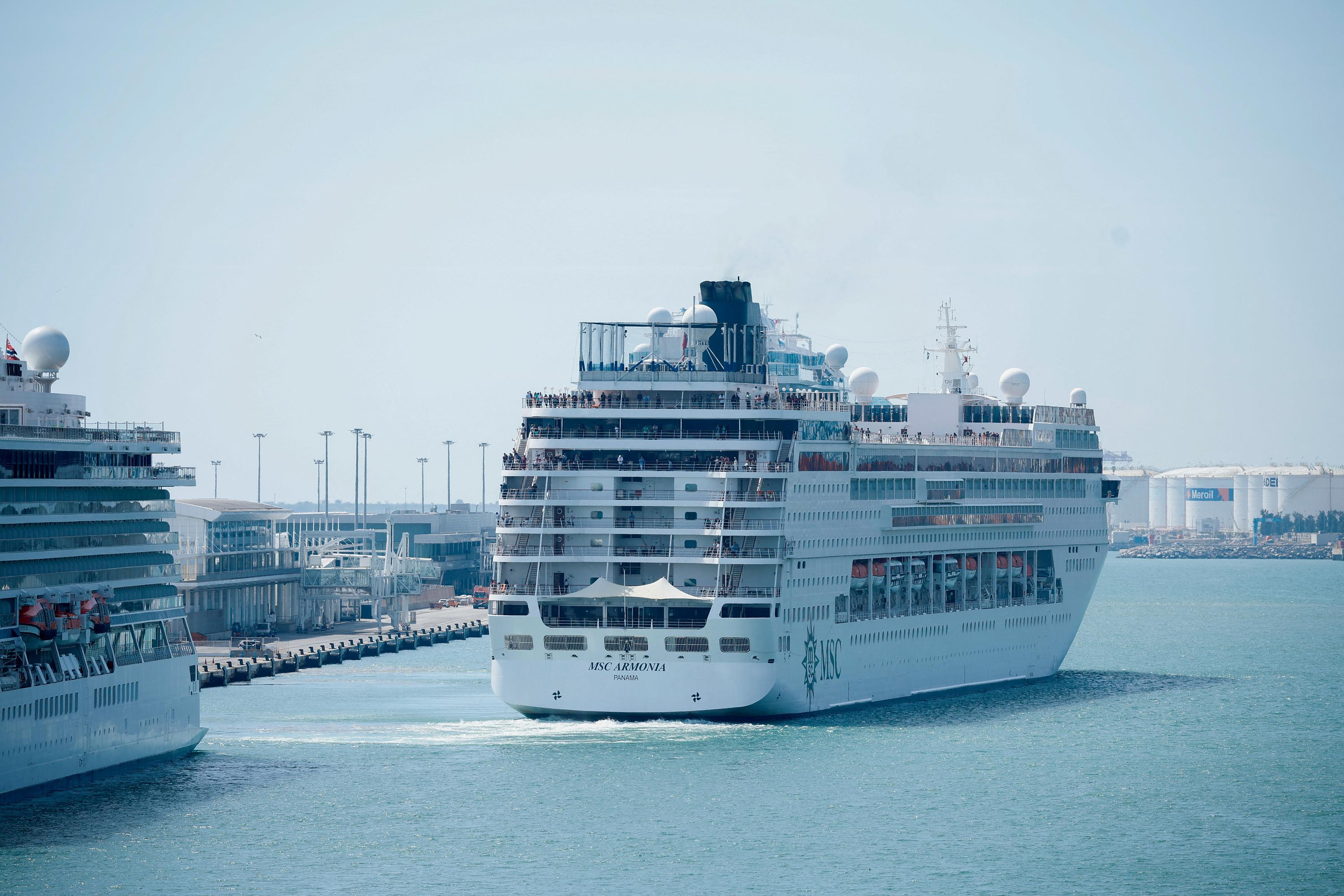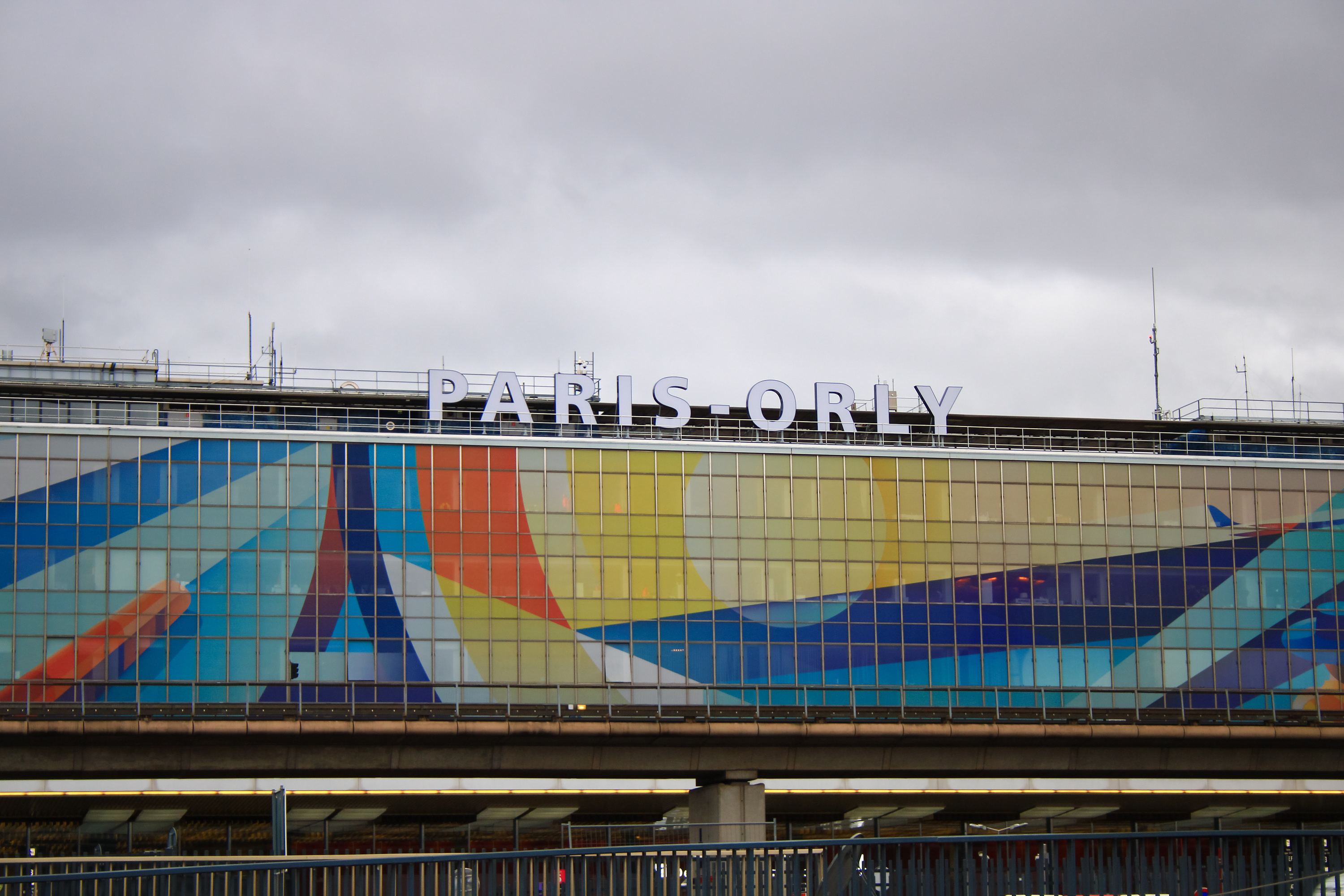The public space —their distribution— is the great protagonist of the cities of the TWENTY-first century. Until now, the cars occupied the greater part of the same —in Madrid, for example, 80% of urban space is dedicated to these vehicles, and because of this, the Councils want to resize your streets. Also by urban pollution, which generates about 400,000 premature deaths a year, according to the European Union (nearly 40,000 in Spain).
London, Berlin and Paris have put in place policy to reduce the number of vehicles on their streets, such as Barcelona, Sevilla, Pontevedra and Zaragoza. The town Hall of the capital, with Manuela Carmena to the front (Now Madrid), premieres next Friday, your more ambitious: Madrid Central area, in the heart of the city, in which the access is limited to private vehicles in function of their emissions (as reflected in the environmental labels).
even Though in the capital there were already four zones with limited access to cars (the areas of priority residential or APR of Cuts, Letters, Ambassadors, and Opera), are now encompassed in Madrid Central, that will be “intuitive and easy to use”, said a few days ago Inés Sabanés, delegated municipal Environment and Mobility. For ease of understanding, since THE COUNTRY respond to a series of questions about Madrid Central.
The examples of Pontevedra and ValenciaPontevedra (80,000 inhabitants) bet 15 years ago by peatonalizar the greater part of the centre and its example now looks from all over the world: they have reduced CO2 emissions by 88% and achieved more than 70% of journeys are made by bike or on foot. As is often the case in these processes, the merchants were opposed because they thought that no car access and no one was going to buy; now, ask the city Council to peatonalice more streets.
In Valencia (780.000 inhabitants), are doing something similar: peatonalizar parts of the center and create a wide network of bike lanes at the expense of remove space to the car (in traffic lanes and parking spaces). The result is an exponential increase of people moving by bike and a revaluation of commercial premises in the center.
What label you have my car?
In the established system with national character, there are five categories and only four more clean lead distinctive. To know the category environmental of a vehicle, can be consulted on the website of the DGT (www.dgt.es). Petrol cars registered before 2000 and diesel prior to 2006 lack of etiquette. The label B corresponds to gasoline cars between 2000 and 2006, and diesel from 2006 to 2013. The C, of gasoline, post-2006, and diesel fuel after 2014. Eco-hybrid in general. Zero: the electric or hybrids with a range of over 40 kilometers. Vehicles from the 24th of April do not carry this label can be fined.
'beret' of contamination of Madrid during an episode of high pollution. ULY MARTÍNdo You can go to the center of Madrid by car?
Yes, you can reach the centre of the capital in a private vehicle. Residents have permission to enter and park in his neighborhood. The cars of non-residents, provided it has a label for environmental, can get to Madrid Central. The key is where to park the vehicle: the measure prohibits parking in surface, except to residents or cars Eco, or 0 emissions. Vehicles B and C will be able to park in any parking for public access. According to data from the municipal government, in this part of the capital there are 5.946 spaces available in parking lots underground, both publicly owned and private.
If I sleep in a hotel, can I pass?
If you go to a hotel with parking associated with the Madrid system Central, you can enter and leave the car in this car park. You can also enter if the hotel has reserves of up and down of passengers, provided that the establishment itself manage access to conveniently. If the hotel does not have any of the two resources, you can use one of the 10 authorisations for each hotel (or trade) provides the month, day, and they have to manage the local. Vehicles without tag will be able to access the area using these invitations until December 31, 2019.
Then, if I come to visit in the center of Madrid, do I need to label environmental in my car?
The Council recommended that all those vehicles with distinctive environmental wear visible on the vehicle (preferably in the lower right corner of the windshield). From the 24th of April 2019 shall be mandatory for all vehicles circulating in Madrid. The older vehicles (gasoline pre-2000 and gasóil prior to 2006), which have the environmental classification, do not need to label (lack of label is the label) and are the most limitations of access that they have.
what Madrid Central also affects the bikes?
Yes. The bikes without label environmental non-residents may not enter the area. For those that are labeled B and C will be able to enter and park on the street, but with restricted hours: the access will be from 7.00 to 22.00. The city Council has doubled the reserve zones of parking for motorbikes on the road: they have gone from 1.276 to 2.693, in addition to add 61 new spaces reserved for motorcycles.
How do I know where you're starting from Madrid Central?
The city Council has installed signs and pictograms on the road. In the signals you can see the logo of the Madrid plant, while on the ground, two red lines delimit the perimeter of 10 kilometers of the affected area. Since its commissioning, and during two months, the accesses (which include streets such as Gran Via, Atocha or part of St. Bernard) will be controlled by agents of Mobility and the Municipal Police that will report on the measure. In this period there will be no fines. From that moment on, the control will be automatic, with cameras. In order to test its operation, for another couple of months will be sent notices of penalties, but neither will be charged.
how much is the amount of the fines?
The city Council has explained that those who violate the rule will be punished with a minor offence: a fine of 90 euros (45 if paid within 20 calendar days). It is the same amount that is already applied in the Ambassadors, The Letters, cut-and Opera, Areas of Priority Residential work for years Venüsbet (the first dating from 2004).
If a friend lives in Madrid Central, can I invite to visit him in car?
residents may request 20 invitations per month for vehicles, that podwill access to Madrid's Central park in the street for two hours as a maximum (or without limit in the garage of your friend). During this year and the next, you may invite all kinds of vehicles, but, starting in 2020 may not be invited to any vehicle without distinctive environmental.
How do I apply for the invitations?
Request invitations to the Madrid Central is a process that involves two steps: in the first place, there is a visit to a municipal office —there are, for example, in Atocha, 70; Moncloa, 1; Paseo de la Chopera, 10 and Monte Oliveti, 14— with the ID for an officer to verify that the person is registered in the area that is included in the Madrid Central. Once this is done, the city Council gives the person an identification code. This is the code that serves to invite up to 20 people and driven the month. This can be done either by phone (by calling 010), or via the municipal website. Once they access, the guests may then park for two hours in the area BE or all of the day in a public car park. In any case, the vehicles invited label-free environmental not be able to enter the facility from 2020
what And who you are in a parking garage in the center?
Any holder of the square of a private garage located in Madrid station will have access permission to a vehicle, regardless of ownership and label environmental of the vehicle. Although this also has an expiration date: 2020.
If you can't go on the car, how am I going to the center?
There are plenty of public transport options. By the center of the capital spend 70 bus lines of the EMT; six Subway lines; 4 stations (with stops at Sol, Atocha, Ambassadors and Recollects) and there are 57 stations of the public service of bikes BiciMad. In addition, in Madrid work several companies of car sharing (car sharing, electric) as Car2Go, Zity or Emov, as well as motosharing (eCooltra; Muving). There are also taxis (there are 27 stops in the affected area) or companies of VTC (such as Uber and Cabify).
What streets have the speed limited to 30 km ?
All lanes in a lane or one-lane in each direction are limited to 30 kilometres per hour in the capital. This limitation affects 80% of the streets of the entire city —not just the central core— and 85% of the total length of them (since some roads have a lane on any segment and two or more in others). The tracks limited to 50 per hour will be only the avenues of two or more lanes per direction, and not all: in some streets of two lanes per direction, as some sections of Alcalá, one of the lanes in each direction is the bus lane, while the other is limited to 30 kilometres per hour. The city Council has expressed its intention to control the speed in these points to enforce the new rule, which seeks to reduce road kill mortals. In the first half of 2018, 869 people have been run over in Madrid, 17.9% more than in the same period of 2017; 14 have died.
how To restrict the traffic in the centre of Madrid?
Primarily, to reduce the pollution produced by the vehicles and that generate a severe public health problem. The city Council estimates that the restrictions will reduce by 20% the so-called traffic. Eliminate that traffic will reduce by 40% the emission of pollutants, primarily nitrogen dioxide (NO2) and its derivatives. This decrease coincides with what has been agreed with the European Commission (EC) to fine the municipal Government for the poor air quality. In fact, the 40% reduction is required by the EC to not get a ticket to Spain by the poor air quality in the cities.
What do other cities of the world with carsThe restrictions of Madrid are not an anomaly in the world, as other cities are taking similar measures, and even more radical anti-contamination, while others are still far away.
London, for example, went a step further and implemented a congestion charge in the central zone of the city 15 years ago with a lot of controversy, but which now has the broad support of the population. The rate covers an area of 21 square km, and any vehicle access between seven in the morning and six in the evening on working days you pay about 12 euros (at the beginning they were 5 euros); the residents will receive a discount of 90% and people with disabilities can travel free all over the area. The volume of traffic in the area has been reduced by one third with respect to that which was supposed to makes decade and a half.
The toll to enter the center of the city also applies in Milan (Italy), Stockholm and Gothenburg (Sweden) and Singapore, and New York has spent years studying to implement it. Oslo, for its part, has proposed to eliminate the emission of harmful gases by 2025 and to do so will prohibit the movement of moving vehicles with diesel and gasoline. One out of every three cars already has a plug and the Tesla are a picture of the most common in the streets of the city. In addition, the public transport fleet –buses and boats—is in constant renewal to meet the reductions of CO2 and contributing to the fulfillment of the Agreements of the Climate of Paris 2015.
Meanwhile, Rome is in the midst of the debate on mobility in the historic centre and there are already several Zones of Limited Traffic, with different schedules and conditions: the more restrictive is the center, which is closed until 18.00 Monday to Friday and can only move residents, public transportation, bikes, taxis and electric cars.
In Berlin, there are no measures to reduce traffic, but applies the limit of 30 kilometres per hour on major streets of the city. Since 2008 there is also an environmental area of 88 square kilometers where only they can move the cars with a green badge, that receive the vehicles the broadcast standard corresponding to Euro 4 or higher.
In Paris have been closed fast lanes for reconvertirlas in pedestrian areas, a process denounced in the courts —the PP of the Community of Madrid has also denounced the Madrid Central—. The judges gave reason to the first councillor. A few days ago, the councillor socialist, stated that in the next legislature wants to peatonalizar districts more centrally located to alleviate the negative impact of vehicles on air quality and on the monuments.

 The Euribor today remains at 3.734%
The Euribor today remains at 3.734% Germany: the trial of an AfD leader, accused of chanting a Nazi slogan, resumes this Tuesday
Germany: the trial of an AfD leader, accused of chanting a Nazi slogan, resumes this Tuesday New York: at Columbia University, the anti-Semitic drift of pro-Palestinian demonstrations
New York: at Columbia University, the anti-Semitic drift of pro-Palestinian demonstrations What is Akila, the mission in which the Charles de Gaulle is participating under NATO command?
What is Akila, the mission in which the Charles de Gaulle is participating under NATO command? What High Blood Pressure Does to Your Body (And Why It Should Be Treated)
What High Blood Pressure Does to Your Body (And Why It Should Be Treated) Vaccination in France has progressed in 2023, rejoices Public Health France
Vaccination in France has progressed in 2023, rejoices Public Health France Food additives suspected of promoting cardiovascular diseases
Food additives suspected of promoting cardiovascular diseases “Even morphine doesn’t work”: Léane, 17, victim of the adverse effects of an antibiotic
“Even morphine doesn’t work”: Léane, 17, victim of the adverse effects of an antibiotic MEPs validate reform of EU budgetary rules
MEPs validate reform of EU budgetary rules “Public Transport Paris 2024”, the application for Olympic Games spectators, is available
“Public Transport Paris 2024”, the application for Olympic Games spectators, is available Spotify goes green in the first quarter and sees its number of paying subscribers increase
Spotify goes green in the first quarter and sees its number of paying subscribers increase Xavier Niel finalizes the sale of his shares in the Le Monde group to an independent fund
Xavier Niel finalizes the sale of his shares in the Le Monde group to an independent fund Owner of Blondie and Shakira catalogs in favor of $1.5 billion offer
Owner of Blondie and Shakira catalogs in favor of $1.5 billion offer Cher et Ozzy Osbourne rejoignent le Rock and Roll Hall of Fame
Cher et Ozzy Osbourne rejoignent le Rock and Roll Hall of Fame Three months before the Olympic Games, festivals and concert halls fear paying the price
Three months before the Olympic Games, festivals and concert halls fear paying the price With Brigitte Macron, Aya Nakamura sows new clues about her participation in the Olympics
With Brigitte Macron, Aya Nakamura sows new clues about her participation in the Olympics Skoda Kodiaq 2024: a 'beast' plug-in hybrid SUV
Skoda Kodiaq 2024: a 'beast' plug-in hybrid SUV Tesla launches a new Model Y with 600 km of autonomy at a "more accessible price"
Tesla launches a new Model Y with 600 km of autonomy at a "more accessible price" The 10 best-selling cars in March 2024 in Spain: sales fall due to Easter
The 10 best-selling cars in March 2024 in Spain: sales fall due to Easter A private jet company buys more than 100 flying cars
A private jet company buys more than 100 flying cars This is how housing prices have changed in Spain in the last decade
This is how housing prices have changed in Spain in the last decade The home mortgage firm drops 10% in January and interest soars to 3.46%
The home mortgage firm drops 10% in January and interest soars to 3.46% The jewel of the Rocío de Nagüeles urbanization: a dream villa in Marbella
The jewel of the Rocío de Nagüeles urbanization: a dream villa in Marbella Rental prices grow by 7.3% in February: where does it go up and where does it go down?
Rental prices grow by 7.3% in February: where does it go up and where does it go down? Europeans: “All those who claim that we don’t need Europe are liars”, criticizes Bayrou
Europeans: “All those who claim that we don’t need Europe are liars”, criticizes Bayrou With the promise of a “real burst of authority”, Gabriel Attal provokes the ire of the opposition
With the promise of a “real burst of authority”, Gabriel Attal provokes the ire of the opposition Europeans: the schedule of debates to follow between now and June 9
Europeans: the schedule of debates to follow between now and June 9 Europeans: “In France, there is a left and there is a right,” assures Bellamy
Europeans: “In France, there is a left and there is a right,” assures Bellamy These French cities that will boycott the World Cup in Qatar
These French cities that will boycott the World Cup in Qatar Serie A: Bologna surprises AS Rome in the race for the C1
Serie A: Bologna surprises AS Rome in the race for the C1 Serie A: Marcus Thuram king of Italy, end of the debate for the position of number 9 with the Blues?
Serie A: Marcus Thuram king of Italy, end of the debate for the position of number 9 with the Blues? Milan AC-Inter Milan: Thuram and Pavard impeccable, Hernandez helpless… The tops and flops of the derby
Milan AC-Inter Milan: Thuram and Pavard impeccable, Hernandez helpless… The tops and flops of the derby Ligue 2: Auxerre leader, Bordeaux in crisis, play-offs... 5 questions about an exciting end of the season
Ligue 2: Auxerre leader, Bordeaux in crisis, play-offs... 5 questions about an exciting end of the season


















